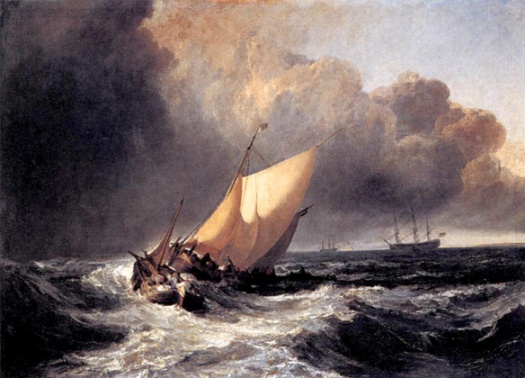I’ve been taking a dive into the world of JMW Turner in recent weeks. I still have not managed to see the new film although hopefully I’ll get to see that soon.
I’ve seen Todd Henry of ‘Accidental Creative’ fame discuss a model that describes the phases of creative growth – discovery, imitation, divergence and crisis. The phases are just what you would expect: A growing awareness of an interest in an area; copying of the masters; making work that is their own; and finally a recognition that to move forward the old techniques will need to be abandoned.
There are clear echoes of this pattern of growth in Turner’s work. A major inspiration for Turner was Claude Lorrain, born Claude Gellee, 1600-1682, and sufficiently famous to be known just as ‘Claude’. John Constable described Claude as ‘the most perfect landscape painter the world ever saw’. The book ‘Turner Inspired – In the Light of Claude’ explores the relationship between the work of Turner and that of Claude from a century or more earlier and provides many examples of Turner’s recreations of Claude’s images.
There is a distinct evolution in Turner’s style with time. His early work closely resembles the paintings by Claude but slowly he drifts away from the precision embodied by Claude to something much looser. Eventually of course Turner’s work becomes very loose indeed, perhaps the result in his passing into the crisis phase?, which gave us work that was in turn to inspire generations of artists to come including the Impressionists and the case is made in ‘Turner, Monet, Twombly’ that the reach of Turner extended to Cy Twombly.
In this dive into the work of Turner I was struck by some of the comments on his use of color and in particular incorporation of ‘new’ colors into his work that gave it a sense of vibrancy bordering on gaudiness. As an earlier adopter of new paints that set him apart from his contemporaries I couldn’t help but wonder whether Turner over did it a bit with these paints in the same way that early adopters of HDR technology did initially (and still do in some cases!).
I do find it amusing that for someone like me who has largely ignored history I’m finally coming around to the recognition that there is much to be learned from those that have gone before us. Spending time looking back at the work of the masters can indeed help to propel us forward. Or as Mary Oliver put it in ‘A Poetry Handbook‘:
‘To be contemporary is to rise through the stack of the past, like fire through the mountain. Only a heat so deeply and intelligently born can carry a new idea into the air.’



